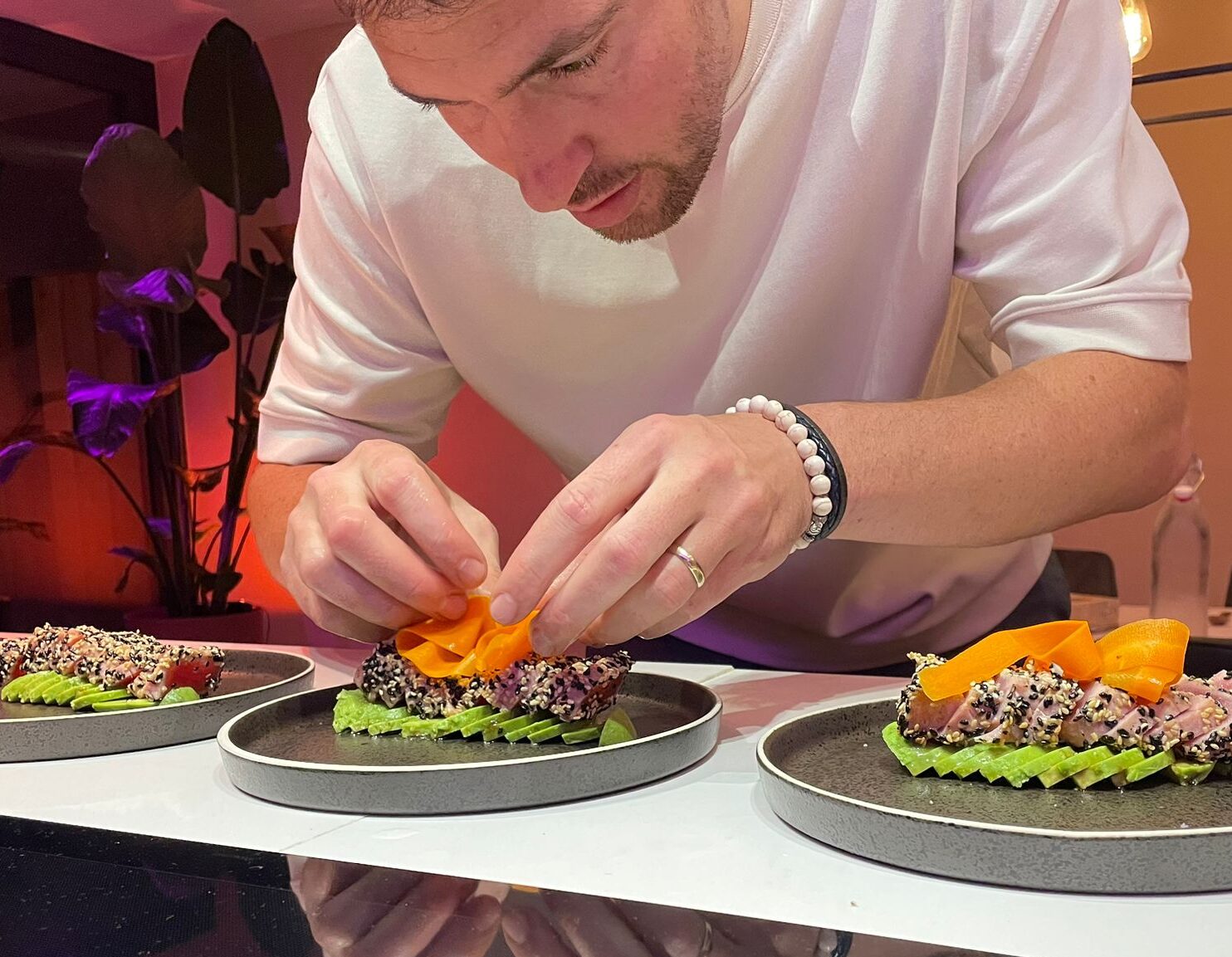It's a fact: the taste of a delicious dish becomes even more refined when it is attractively presented. Dressing a dish is therefore very important. You don't have to be a master chef at dressing; with practice you create true works of art. Here are some simple tips to make your plate beautiful.
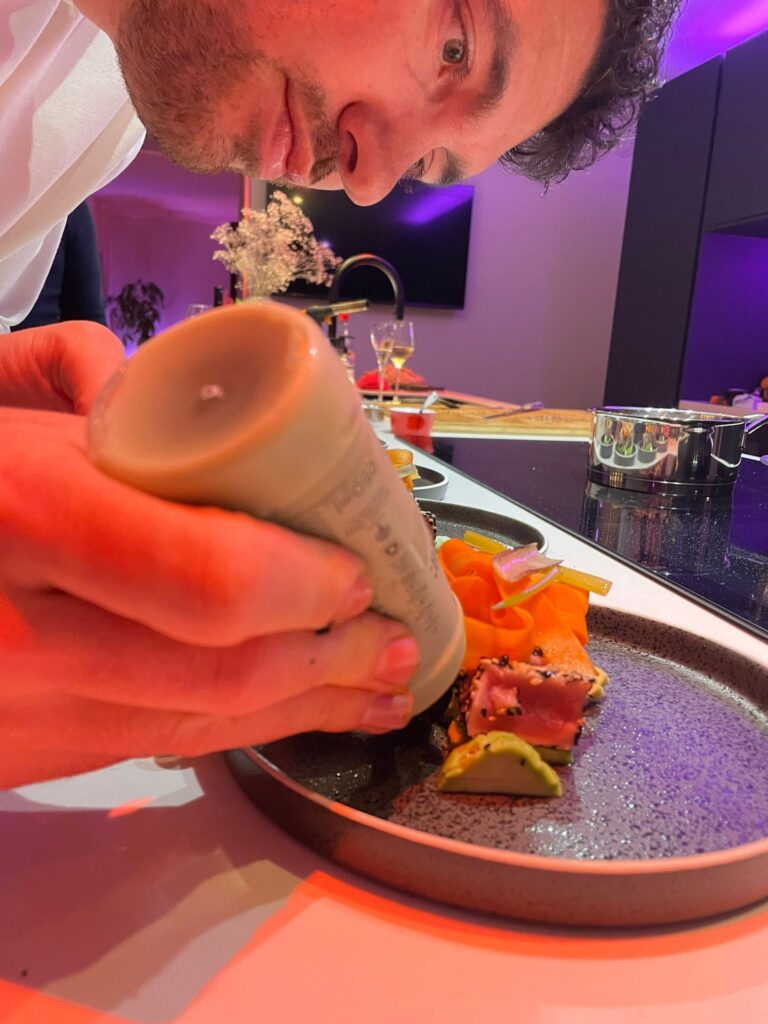
The right board
Dressing a dish starts with choosing the right plate, even if you are limited in tableware options. Here are some considerations to keep in mind:
Colour from the board
The color of the plate affects how vibrant the colors of the ingredients appear. Contrast is essential: a slightly darker plate shows off brightly colored ingredients.
Size from the board
Preferably use a slightly larger plate than one that is too small. This gives the ingredients enough space and leaves room for nice details.
Depth from the board
Experiment with the depth of plates. For example, soup can be served in a clear glass, and meat can be presented on a wooden board lined with wax paper. Creativity and experiments are key here.
Clean your plate
For a flawless start, it is important to wipe the board or surface thoroughly with a slightly damp cloth (lukewarm water). This not only gives a fresh shine, but also provides a clean base.
Put your main ingredient in the spotlight
Create the structure of your dish around the main ingredient. It deserves a podium, while other ingredients are supportive.
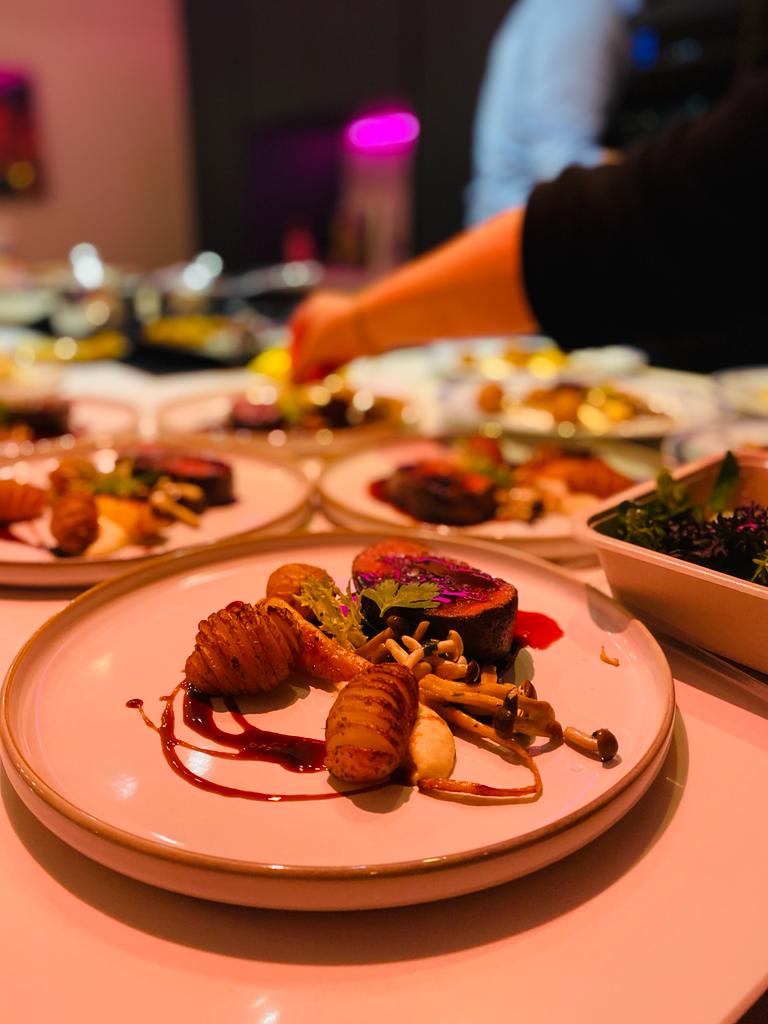
Mix colors and textures
Contrast in colors and textures adds visual appeal. Experiment with combinations such as soft and crispy for an exciting presentation.
Decide on the distribution of your ingredients
The placement of ingredients on the plate is an important consideration. Some chefs place everything on one half and decorate the other half with sauce and herbs, while others build from the center.
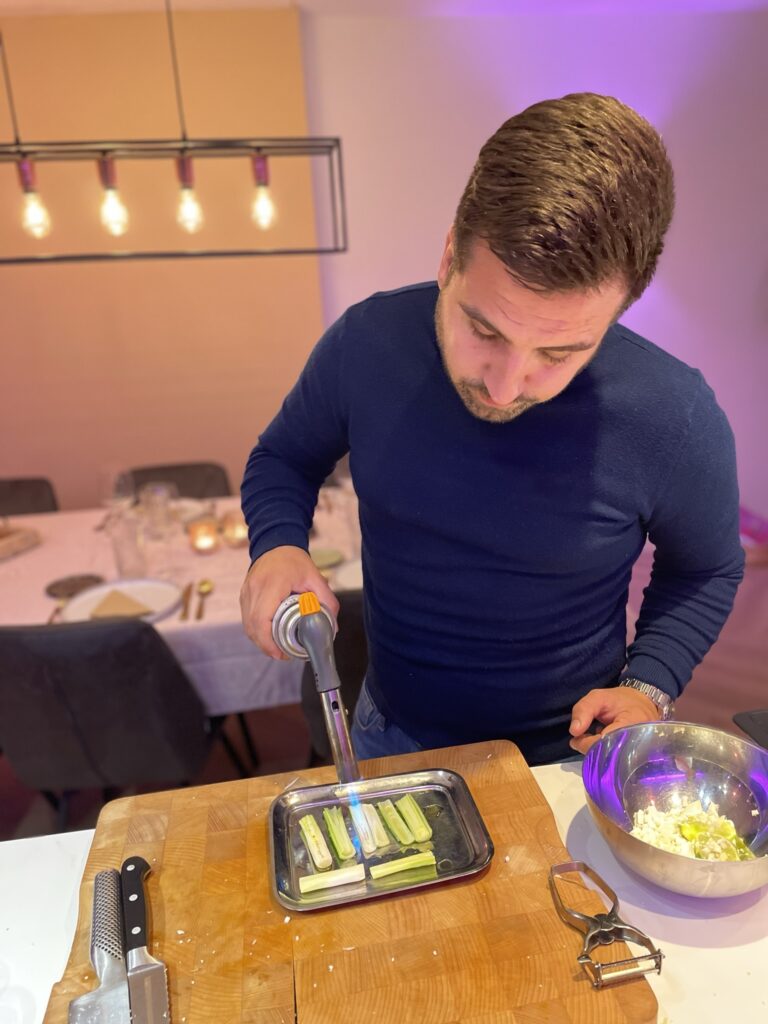
Build your dish in layers
Sauce can serve as a base for meat, fish or pasta. Experiment with layers, for example by using lettuce as a base for a salad.
Work at height
Different heights add visual interest. Play with the shape of food and add height differences for an attractive presentation.
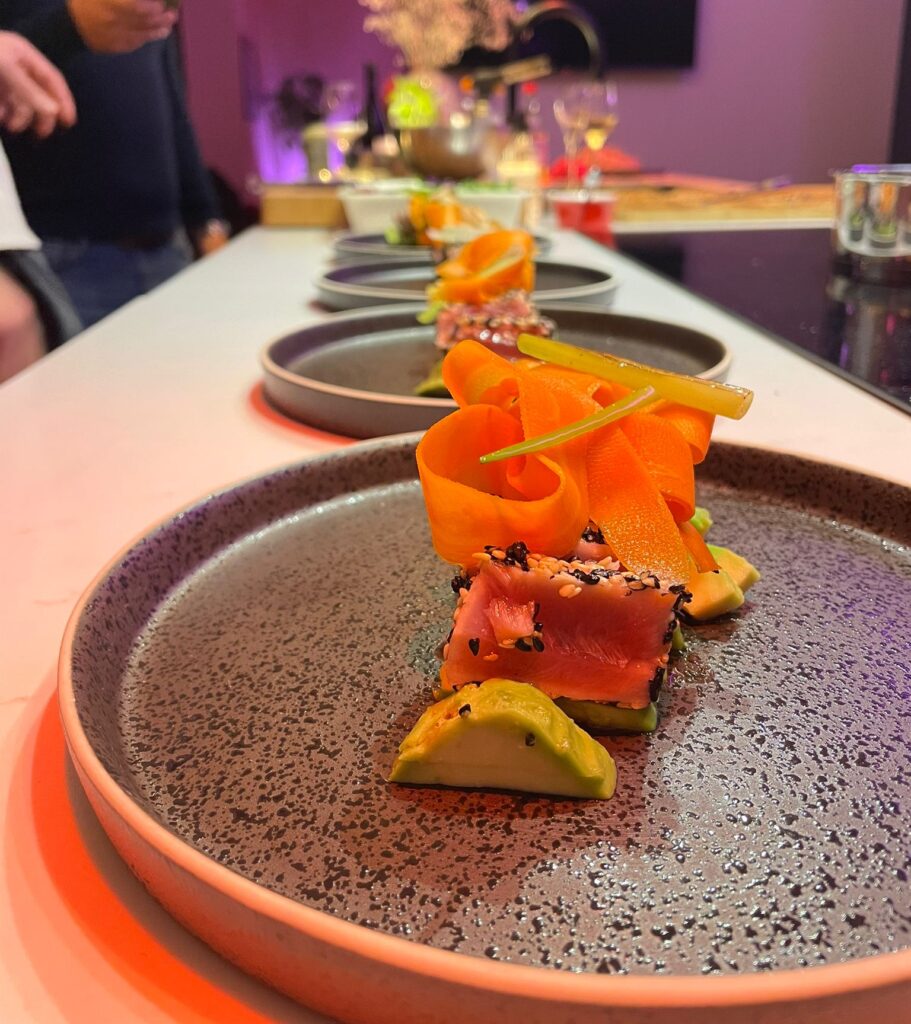
Roll up your pasta
For long pasta like spaghetti, rolling it up can add an artistic element. Make sure that the sauce is on the plate as a base, roll up the pasta and finish with extra attention to ingredients.
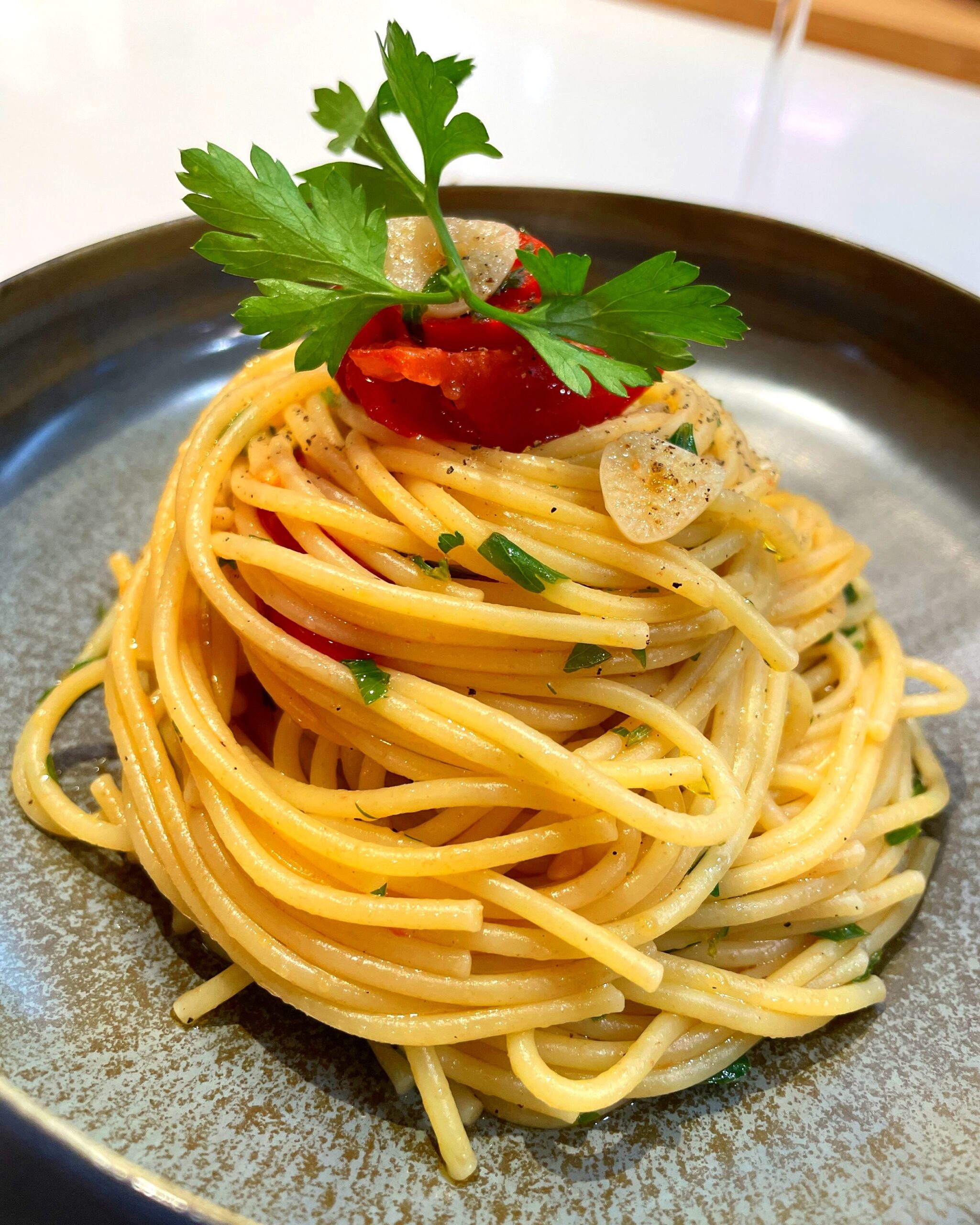
Be creative with sauces and dressings
Sauces and dressings can be presented in different ways, from drips to circles to meringues. Use small squeeze bottles, molds, spoons, or brushes to create various shapes. Control the sauce presentation to achieve a beautiful aesthetic.
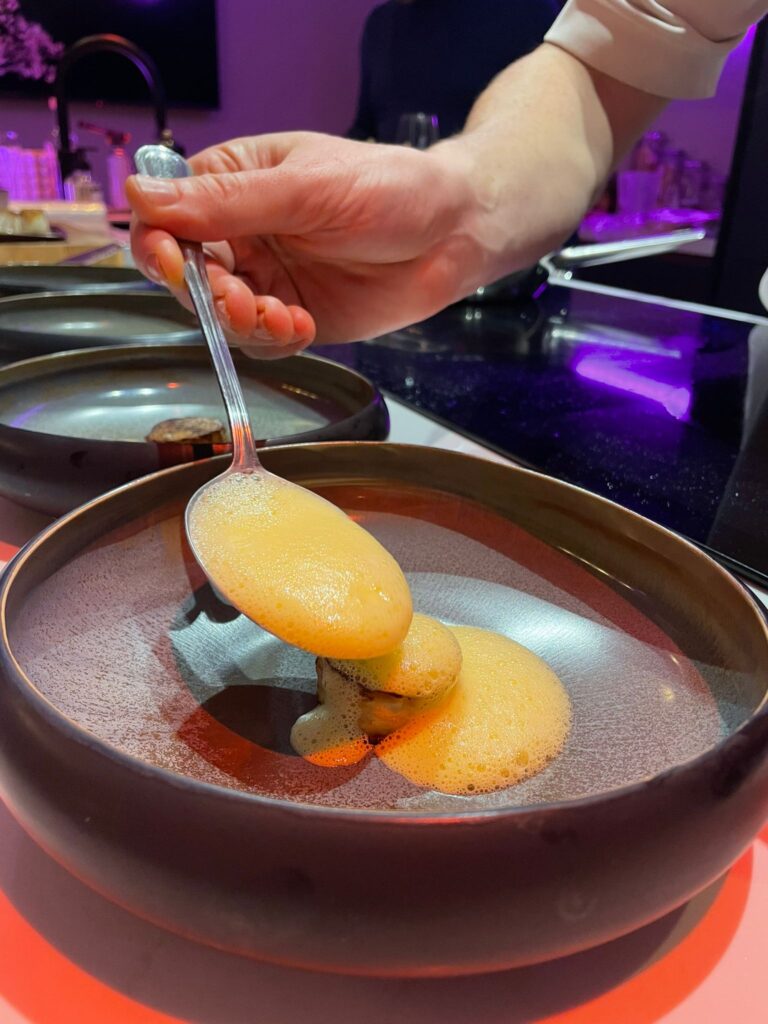
All this contributes to an eye-catching presentation of dishes, where creativity and attention to detail are key. There is no need to load plates; give the ingredients breathing space for a refined impression. Adding small and colorful details visually emphasizes what is on the plate. Experiment and treat yourself or your loved one with a beautifully presented dish.

